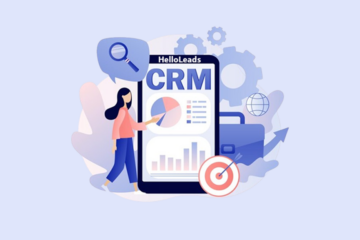
In today’s whirlwind world of marketing, capturing your leads’ attention and delivering the perfect message at the perfect moment can be the pivotal factor that distinguishes success from mediocrity. In this ever-evolving landscape, the concept of lead segmentation emerges as a strategic powerhouse. It bestows upon you the ability to slice through the marketing noise, crafting personalized experiences that genuinely resonate with your audience.
Lead segmentation involves dividing your leads into smaller, highly targeted groups based on specific characteristics. This strategic approach acts as a gateway to increased engagement, higher conversion rates, and exceptional business outcomes.
Get ready to revolutionize your lead nurturing approach as we delve into the captivating world of lead segmentation and explore the unparalleled advantages it offers for your marketing success.
What is lead segmentation?
Lead segmentation is the process of dividing a larger group of leads into smaller, more targeted groups based on specific characteristics, such as demographics, behavior, or purchase history.
Importance of lead segmentation

Lead segmentation is important because it allows you to create more targeted and relevant content for your leads, which can improve engagement, increase conversion rates, and drive results for your business. By segmenting your leads, you can:
Improve personalization: By dividing your leads into smaller, more targeted groups, you can create more personalized content that speaks directly to each group’s unique interests and needs.
Enhance relevance: Lead segmentation allows you to send the most relevant content to each group of leads, improving the chances that they will engage with your messages and take action.
Increase conversion rates: By sending targeted and relevant content to your leads, you can improve conversion rates and drive results for your business.
Types of lead segmentation

There are several types of lead segmentation, including:
Demographic segmentation: This type of segmentation divides leads based on characteristics such as age, gender, location, and income.
Behavioral segmentation: This type of segmentation divides leads based on their behavior, such as website visits, product purchases, or email opens.
Firmographic segmentation: This type of segmentation divides leads based on the type of company they work for, such as size, industry, and revenue.
Technographic segmentation: This type of segmentation divides leads based on their use of technology, such as the tools and software they use in their daily work.
Psychographic segmentation: This type of segmentation divides leads based on their personality, values, and lifestyle.
By using lead segmentation, you can create more targeted and relevant campaigns that drive results for your business. By understanding the unique characteristics and behavior of each segment, you can create content that speaks directly to each group and encourages them to take action.
In conclusion, lead segmentation stands as a transformative approach to lead nurturing that can propel your marketing endeavors to unparalleled heights. By comprehending the unique characteristics and behaviors of your leads, you gain the ability to tailor your content and campaigns to meet their precise needs and interests.
Whether you choose demographic, behavioral, firmographic, technographic, or psychographic segmentation, the key is to craft targeted and relevant experiences that captivate your leads and elevate conversion rates. With lead segmentation, you possess the power to deliver the right message to the right individuals at the right moment, yielding substantial results for your business.
So, take the leap and embrace the potential of lead segmentation to unlock the full scope of your lead generation and conversion strategies. Start segmenting, and start achieving!
Share this blog :










